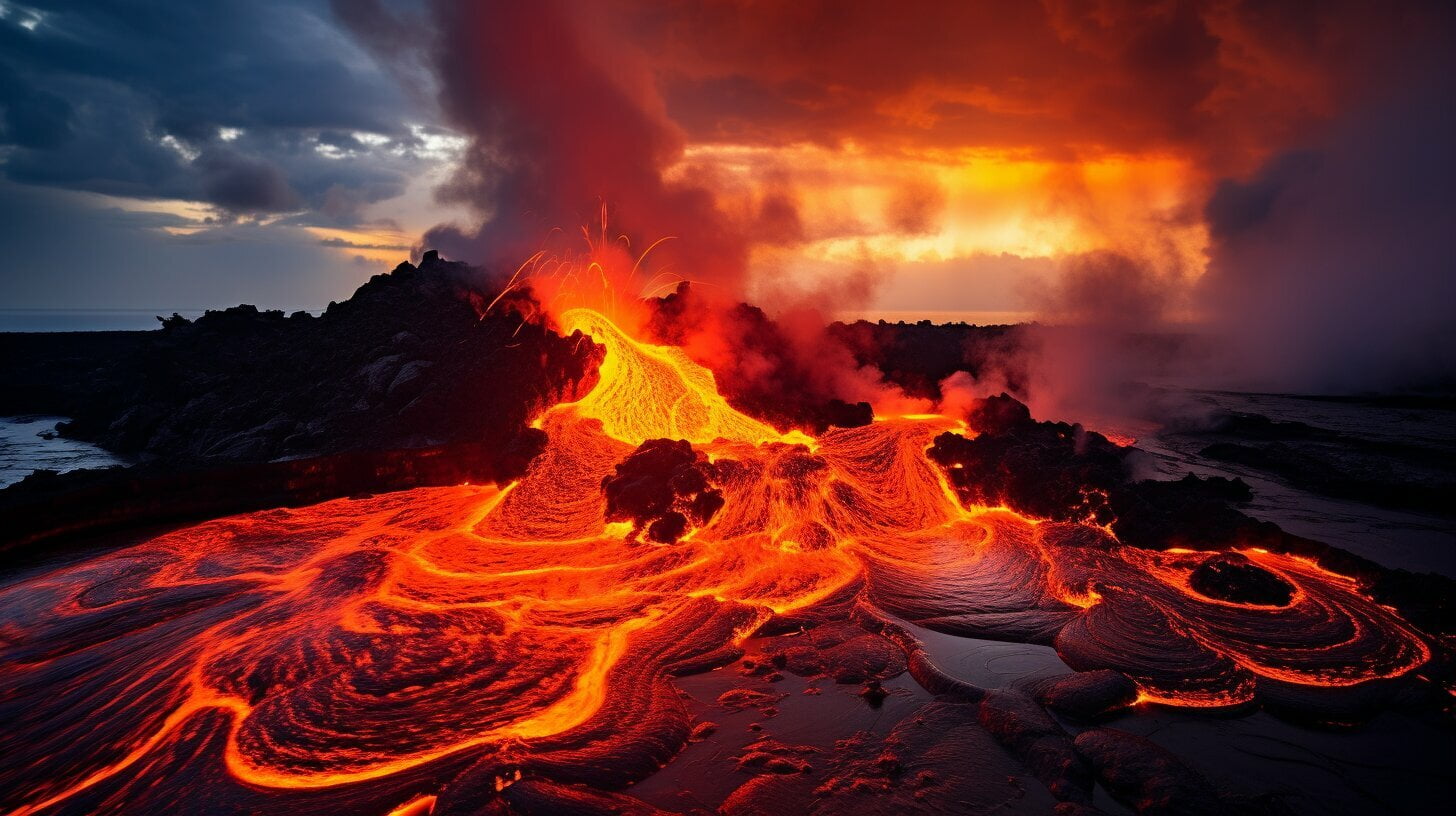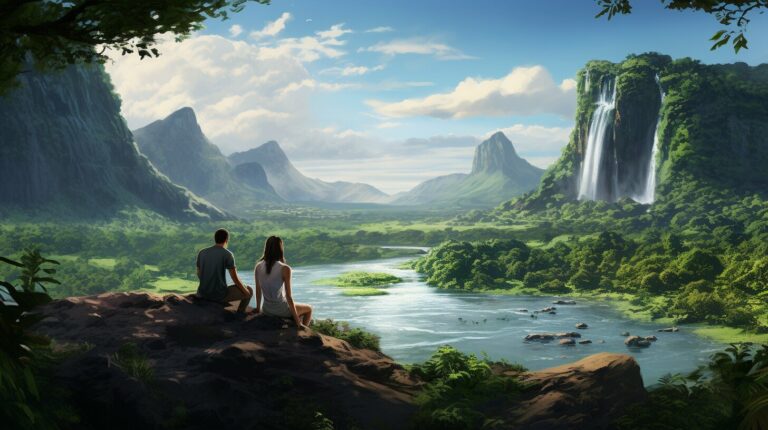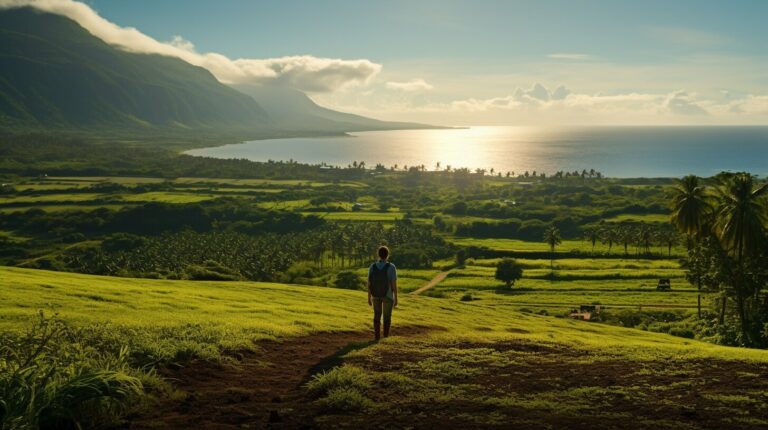Unveiling the Epic History of Hawaii’s Big Island 🌋
The Hawaiian Islands are known for their stunning natural beauty, but beyond the sun-kissed beaches and lush rainforests lies a rich history that has shaped the culture and identity of Hawaii’s Big Island. Understanding the island’s past is key to appreciating its unique character and the awe-inspiring landscapes that draw visitors from around the world.
From the ancient Polynesian settlers to the arrival of Captain James Cook and the rise of King Kamehameha I, Hawaii’s Big Island has a storied past marked by both conflict and triumph. The island’s volcanic activity has also played a significant role in shaping its landscape, creating towering mountains and stunning geological wonders.
In this article, we’ll take a journey through the history of Hawaii’s Big Island, uncovering the stories that have shaped this extraordinary place. We’ll explore the island’s ancient origins, examine the impact of European contact, and trace the path of unification under King Kamehameha I. We’ll also delve into the geological forces that continue to shape the island today.
Key Takeaways:
- Hawaii’s Big Island has a rich history that has shaped its culture and natural wonders.
- Past events on the island include the arrival of Polynesian settlers, Captain James Cook’s exploration, and the rise of King Kamehameha I.
- The island’s volcanic activity has significantly contributed to its unique landscape and geological wonders.
The Ancient Origins: Polynesian Settlers and Cultural Heritage
The history of Hawaii’s Big Island dates back to the arrival of Polynesian settlers over 1,500 years ago. These seafaring people sailed across vast oceans and navigated their way to the Hawaiian Islands, where they established a rich cultural heritage that continues to this day.
The Polynesians brought with them a unique set of skills, including advanced navigation techniques, agriculture practices, and arts and crafts. They quickly adapted to the island’s environment, using the fertile land to cultivate crops such as taro, sweet potato, and yams. With the establishment of agriculture, they were able to sustain a growing population and build communities.
Over time, the Polynesians developed a complex society with a hierarchical structure, which included chiefs, priests, and commoners. They also established religious practices that centered around the worship of their gods, which were closely linked to the natural world. The ancient Hawaiian culture placed great importance on the environment, and the Polynesians had a deep understanding of the land, sea, and sky.
The ancient origins of Hawaii’s Big Island and the contributions of the Polynesian settlers have left an indelible mark on the island’s culture and traditions. Today, visitors can explore the island’s heritage by visiting historical sites and attending cultural events that showcase the rich history and customs of the Hawaiian people.
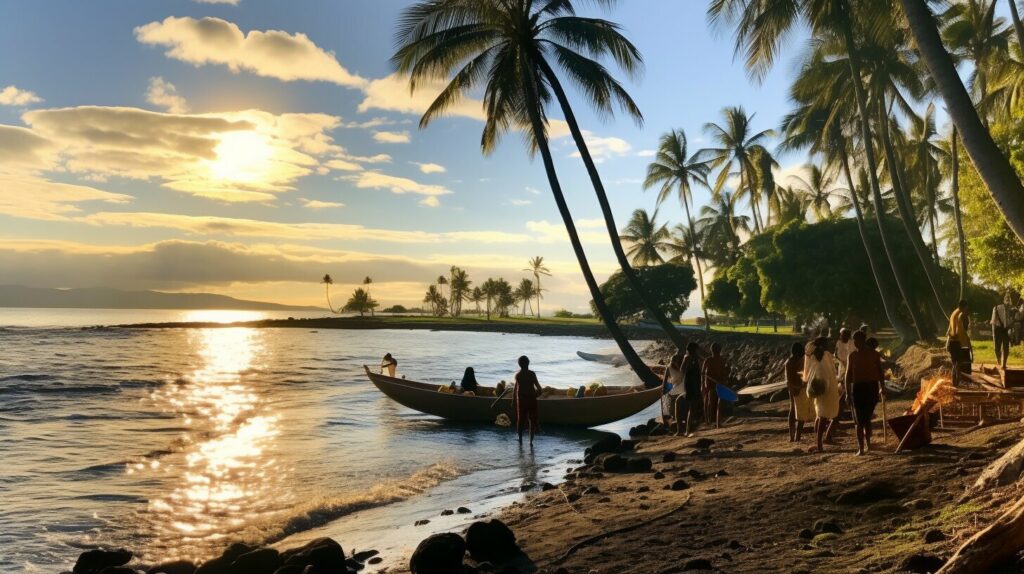
“The Polynesians brought with them a unique set of skills, including advanced navigation techniques, agriculture practices, and arts and crafts.”
The Arrival of Captain James Cook: Contact and Conflict
The arrival of Captain James Cook on Hawaii’s Big Island in 1778 marked a significant event in the island’s history, one that brought both contact and conflict with European explorers.
Cook and his crew were the first Europeans to set foot on Hawaii’s Big Island, where they were met by the island’s inhabitants. The explorers and the native Hawaiians initially had a peaceful encounter, with the native Hawaiians offering gifts and hospitality to the Europeans. However, tension began to rise when Cook attempted to take a chief hostage, which led to a violent confrontation that resulted in the death of Cook and several of his men.
The encounter with Cook and the European explorers marked a turning point in the history of Hawaii’s Big Island, as it brought about significant changes in the island’s society and culture. The encounter also marked the beginning of increased contact with Europeans, which brought both positive and negative impacts on the island.
“The death of Captain Cook was a turning point in the history of Hawaii, marking the end of an era of isolation and the beginning of increased contact with the outside world.”
The impact of Cook’s arrival on Hawaii’s Big Island is still felt today, with several landmarks and sites dedicated to the memory of the famous explorer. One such landmark is the Captain Cook Monument, located on the island’s south coast, which commemorates Cook’s life and his historic encounter with the native Hawaiians.
The legacy of Captain James Cook and his encounter with Hawaii’s Big Island continue to shape the island’s history and culture to this day.
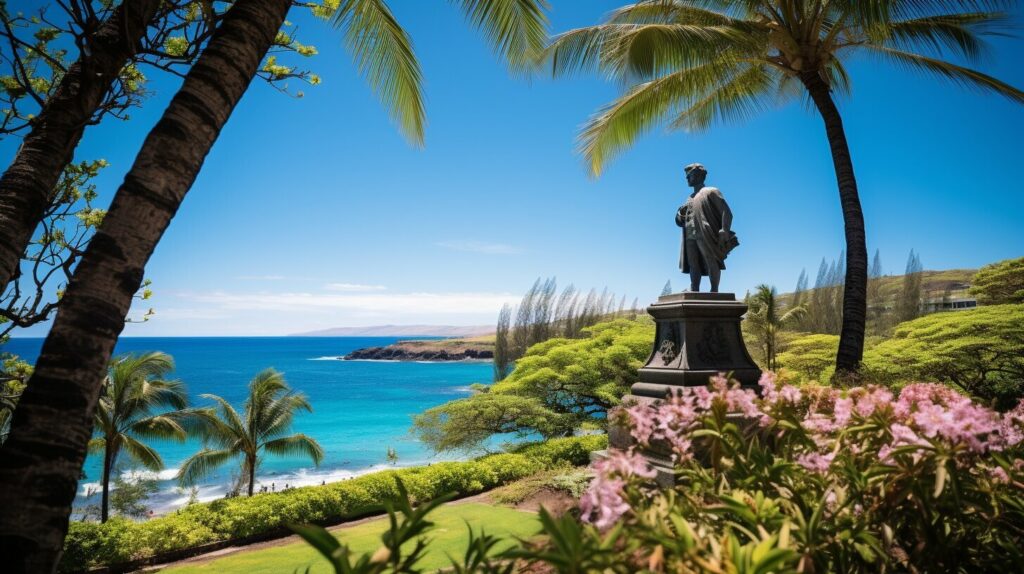
The Rise of King Kamehameha I: Unifying the Hawaiian Islands
The 18th century marked a significant time in Hawaiian history as a powerful and ambitious chief, Kamehameha, rose to prominence. Kamehameha was born on the island of Hawaii and was trained in traditional warfare tactics and diplomacy from an early age. He was determined to unite the Hawaiian Islands under his rule and become the first king of a centralized monarchy.
After a series of battles and alliances, Kamehameha emerged as the victor and established himself as the ruler of Hawaii’s Big Island. He then set his sights on the other Hawaiian Islands, including Maui, Molokai, Oahu, and Kauai. With his strategic planning and use of Western weaponry, Kamehameha was able to conquer each island and unite the Hawaiian Islands under one rule.
Kamehameha’s reign was marked by peace and prosperity, and he implemented various reforms to improve the lives of his people. He established a legal system based on traditional Hawaiian practices and the British legal system, built roads and public works, and encouraged trade with foreign nations.
The Legacy of King Kamehameha
Kamehameha’s legacy continues to be celebrated in Hawaii today, particularly through the annual King Kamehameha Day, a state holiday on June 11th. Many landmarks and statues across the Hawaiian Islands commemorate his accomplishments, including the famous King Kamehameha Statue located in Honolulu, Oahu.
The unification of the Hawaiian Islands under King Kamehameha I laid the foundation for modern Hawaii, and his legacy continues to inspire and shape the island’s rich culture and history.
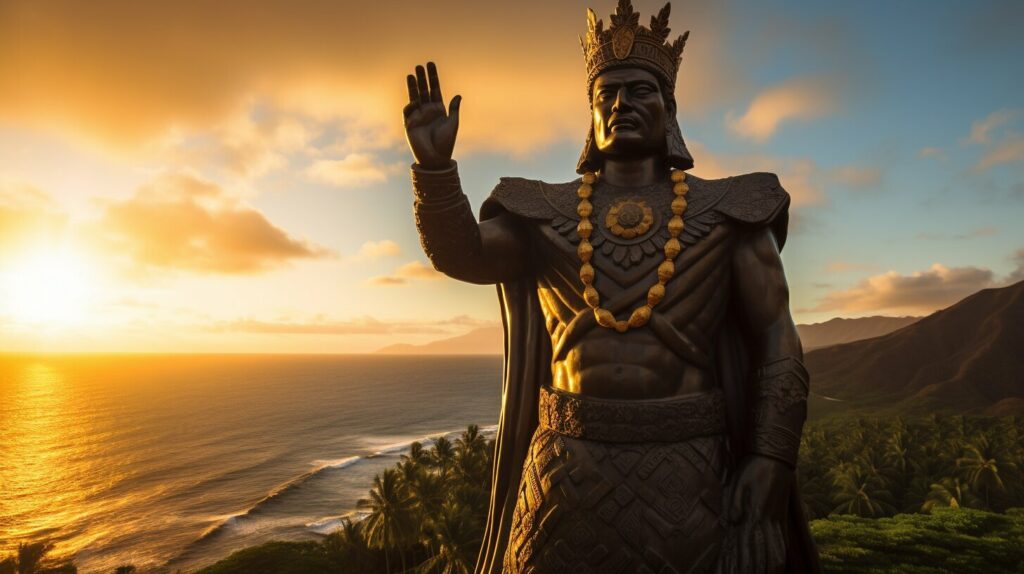
Volcanic Activity: Shaping the Landscape
Hawaii’s Big Island is home to some of the most active and impressive volcanoes in the world, including Mauna Kea and Mauna Loa. These volcanoes have shaped the landscape of the island over millions of years, creating unique geological features and providing a rich history for visitors to explore.
Mauna Kea, also known as “White Mountain,” is the highest volcano on the island and the tallest peak in the entire state of Hawaii. Its summit reaches an impressive 13,796 feet above sea level and is home to world-renowned observatories that take advantage of the clear skies and high altitude. Mauna Kea is also a sacred site for native Hawaiians, with numerous cultural and traditional practices associated with the mountain.
Mauna Loa, on the other hand, is the largest volcano in the world by volume and has erupted 33 times since its first well-documented eruption in 1843. It has shaped the island’s landscape with its lava flows, creating the vast expanses of barren black rock that dot the island’s surface. Despite its active nature, Mauna Loa is a popular destination for hikers and nature enthusiasts, with numerous trails leading to its summit and offering stunning views of the surrounding landscape.
Volcanic activity on Hawaii’s Big Island is ongoing, with the most recent eruption of Kilauea Volcano occurring as recently as 2018. This eruption caused widespread damage and displacement, but also offered a unique opportunity for scientists and researchers to study the volcano’s behavior and impact on the island.
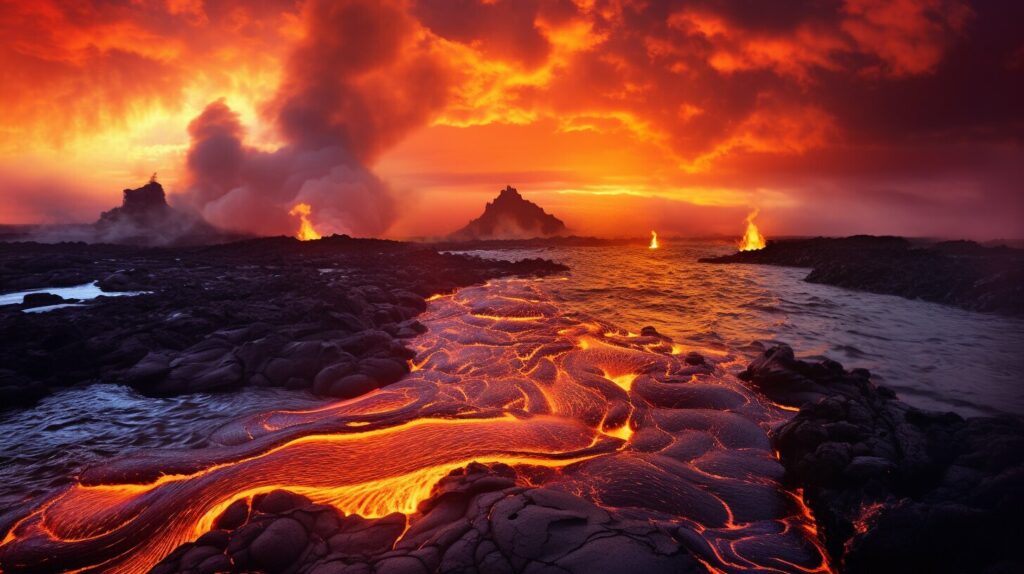
“The volcanic activity on Hawaii’s Big Island has created some of the most unique and breathtaking natural wonders in the world. It’s a testament to the power and beauty of nature, and a reminder of the ongoing geological processes that continue to shape our planet.”
Modern Events and Landmarks: Capturing the Island’s History
As one of the most historically significant places in the world, Hawaii’s Big Island boasts several modern landmarks that capture the island’s rich past. One such landmark is the Captain Cook Monument, located in Kealakekua Bay. Erected in 1878, the monument commemorates the arrival of Captain James Cook in 1778, marking the beginning of a new era for the Hawaiian Islands. The monument is a popular spot for visitors to learn more about the island’s history and take in breathtaking views of the bay.
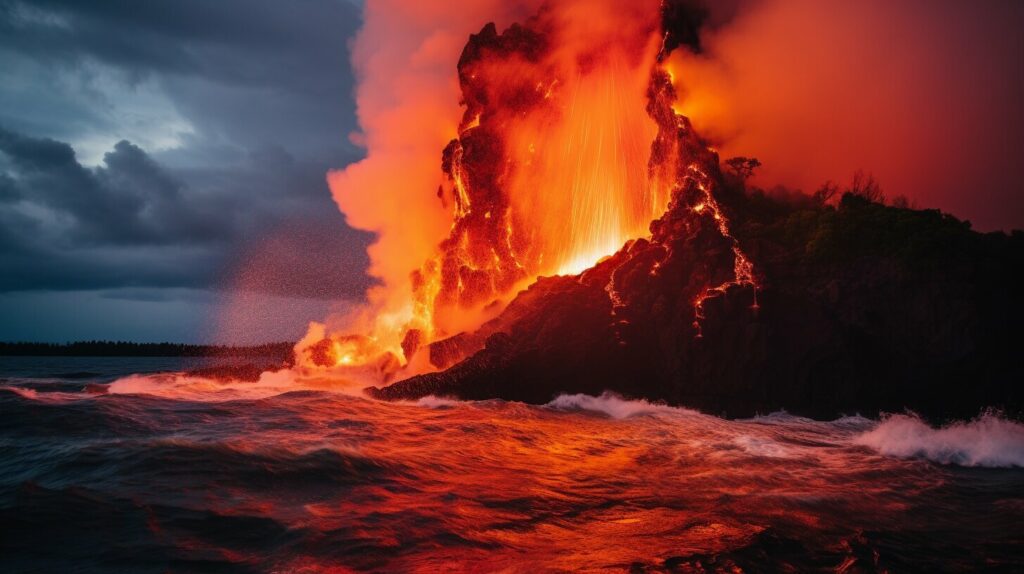
Another significant event in the island’s recent history is the ongoing volcanic activity of Kilauea Volcano. The most active volcano on the island, Kilauea has been erupting continuously since 1983, shaping the landscape and creating new land. The volcano is a testament to the island’s geological history and the constant transformative forces that have shaped it. Visitors to Hawaii’s Big Island can witness this awe-inspiring display of nature firsthand by visiting the Hawaii Volcanoes National Park, which encompasses both Kilauea and Mauna Loa.
These modern events and landmarks serve as reminders of the island’s rich history and the ongoing impact it has on the present and future. Exploring these sites is a must for anyone looking to understand Hawaii’s Big Island in its entirety.
Conclusion:
In conclusion, the history of Hawaii’s Big Island is rich and diverse, reflecting its unique culture and natural wonders. Exploring the island’s ancient origins, the arrival of Captain James Cook, the rise of King Kamehameha I, and the impact of volcanic activity on shaping the landscape, provide a deep understanding of the island’s past.
Moreover, modern events such as the Captain Cook Monument and ongoing volcanic activity at Kilauea Volcano add to the island’s ongoing story. Understanding the island’s history allows visitors to appreciate its culture and natural wonders even more.
Therefore, it is crucial to explore the island’s history, to gain a better understanding of its significance and ongoing legacy.

